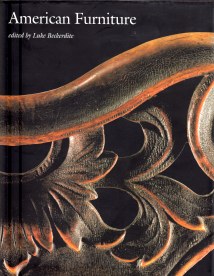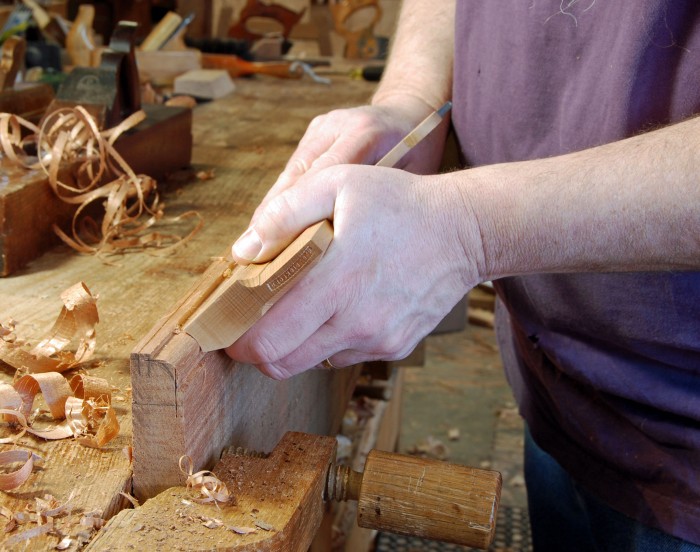
I have two joint stools to finish to go along with a table and joined form I am making. For the seven-foot long table top I opted for quartersawn white oak. So I made the tops of the stools and form from the same material. Yesterday I planed the board for the stool tops. I kept it at double-length to make handling it easier while I planed it flat and dressed the thickness. I decided to keep it that way while I ran the molding too.
I trimmed it to width, then dressed both faces and trued up the edges. I then crosscut both ends and marked out the middle where I eventually would crosscut it in two.
I marked out the 7/8” wide thumbnail molding spacing with a marking gauge along both long edges. Then I followed the steps I outlined in the joint stool book for making the molding; a rabbet plane (in this case, a filester) to begin to define the depth, then bevelling off the shape with smooth plane/jointer. I fiddled a little with a hollow plane like what Matt Bickford does; I had the rabbet, then I chamfered that, then ran the hollow a bit. It was just a bit shy of the right size, and was not perfectly fettled. So it served to further rough out the shape, but I still did the final definition with the smooth plane.



I ran this molding along both edges, then did the two outside ends. Here, I marked the width with a knife and square, rather than a gauge. Then cut it apart and finished each seat with one more molding. Usually I do the end-grain moldings first, but in this case it was worth reversing that order.

The wood is amazing quality; clear, wide and perfectly quartersawn. Air dried. The next best thing to riven. I then finished shaping the seats, and bored one & fit it on the stool. Just like in the book…. http://www.lostartpress.com/Make_a_Joint_Stool_from_a_Tree_p/bk-majsfat.htm

Now, fresh on the success of “Riven Cedrela” I have the phrase “half-a-pair of joint stools” ringing in my head like “four-and-twenty blackbirds…” so stay tuned. It could be my first nursery rhyme.




























